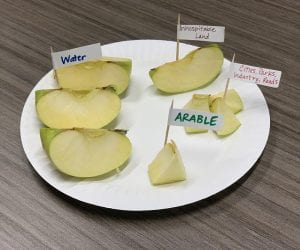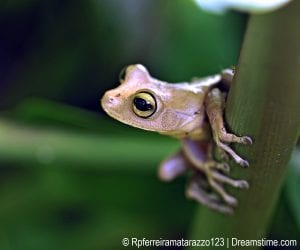While field-based learning and interacting with nature is often touted as the primary way to develop students’ knowledge of environmental issues, what does that mean when concrete and crosswalks are more common in our everyday lives? After all, about 80% of Americans live in cities, and by the year 2030, more than 60% of people around the world will live in urban areas. In other words, the entire world is city-focused, which means any discussion of sustainability must also be city-focused.
With a rapidly urbanizing world, that’s exactly why cities are such important places for teaching about environmental issues and promoting sustainability. “The world’s population is constantly increasing,” the UN says, outlining its goal of sustainable cities by 2030. “For all of us to survive and prosper, we need new, intelligent urban planning that creates safe, affordable and resilient cities with green and culturally inspiring living conditions.”
From urban sprawl to environmental justice to sustainable transportation, there are a myriad of topics and teachable moments cities can provide to bring urban sustainability issues into science, social studies, AP Human Geography, government, and many other classes.
Furthermore, teaching about urban sustainability helps students not only obtain knowledge of both community and environmental issues, but gain the problem-solving skills and civic-action oriented mindsets needed to address the effects of a rapidly urbanizing world.
To get started, here are eight lessons that use students’ local towns or focus on international comparisons to help students better engage with, debate, and analyze these important issues.
Urban Sustainability Lessons for High School Students
Getting Around
Topics: Sustainable Transportation, Renewable Energy, Civics, Climate Change
With transportation accounting for 29 percent of CO2 emissions in the U.S., this action-oriented lesson empowers students to find local solutions to the climate crisis while curbing fossil-fuel dependence in their community. First, students create and conduct a local survey about local residents’ transportation habits and then analyze their collected data to pinpoint a local transportation issue. They will then develop a way to help address this issue while thinking of ways to curb dependence on fossil fuels. The lesson includes sample survey questions as guidance, various ideas for distributing the survey, and critical thinking questions about students’ proposed solution. The follow-up activity describes how students can outline, and potentially present, a community proposal at a city council meeting.
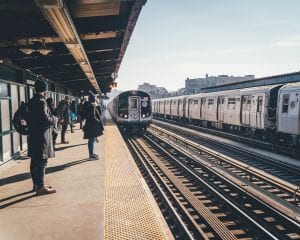
Growing Smarter
Topics: Urban Sprawl, Sustainable City Planning, Land Use
As the world continues to rapidly urbanize, pollution and habitat loss are common problems resulting from urban sprawl. In this lesson, students work cooperatively in groups to prepare a sustainable urban development plan for their city. They first analyze an underdeveloped area in their city, and then develop and communicate a sustainable land use plan that will benefit the community. Using “smart growth” concepts, students consider both the long and short term impacts of their plan, and present it to the class. The lesson plan helps students develop their public speaking, team work, and problem-solving skills.
Tale of 3 Megacities
Topics: Rapid Urbanization, Public Health, Pollution, Sustainable Urban Planning
In this lesson, students analyze and compare urbanization issues from a global perspective, noting the economic, social, environmental, and political implications of a growing population in three world megacities: São Paulo (Brazil), Tokyo (Japan), and Lagos (Nigeria). The lesson begins with students observing and reflecting on choropleth maps that compare global urbanization from 1960 to 2016. Next, students are assigned a megacity and analyze visual items (included in the lesson), such as graphs, photos, infographics, and article excerpts, to become an “expert” on the city. After they complete their research, groups will jigsaw so students can share their knowledge with others. Follow-up activities include having students outline or engineer a possible solution to one of the challenges they identified in their megacity.
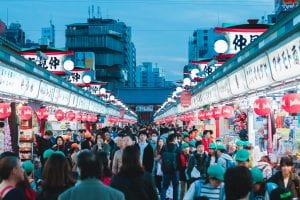
Urban Sustainability Lessons for Middle School Students:
Growing Pains in Texas Hill Country
Topics: Urban Sprawl, Sustainable City Development, Zoning, Civics
In this role-playing, debate simulation, students first read a newspaper article about the laws, tensions, and different perspectives surrounding urban growth in San Marcos, Texas, one of the fastest growing areas in the U.S. Then students create proposed solutions and simulate a city council debate, with some students acting as community members/constituents and the others as city council members. The lesson includes tips for setting-up the simulation, such as having students become familiar with the roles and workings of their local city government before simulation begins. Follow-up activities ask students to collect articles that document their own city’s changes, while reflecting: How has your community’s land changed over time? How does this change impact the environment or other communities in the area? How does your local community compare to urban sprawl issues in the rest of the country or world?

Market Research
Topics: Solid Waste, Personal Consumption, Green Products, Recycling, Social Economics
While this activity focuses on reducing solid waste from product packaging, it’s an excellent way to discuss litter’s impact on the urban environment. Before beginning, ask students to observe where they see the most litter around the school or in their neighborhood. What types of litter is it? Are the items recyclable or not? For the main activity, students take a field trip to a local supermarket, or, if that’s not possible, the instructor can bring in grocery store items for the class to examine. Students will collect data and compare different products’ packaging and prices. Along with collecting data, discussion questions prompt students to think critically about ways that stores, consumers, and companies can reduce solid waste with “pre-cycling” and other means.
As a follow up activity, students can conduct a waste assessment of their school and then propose ways to reduce waste. We have a great blog post for you just on that: how to create a green classroom and school.
Analyzing Environmental Injustice
Grades: 6-8* (*Also suitable for high school grades 9-12)
Topics: Pollution, Inequality, Environmental Discrimination
By analyzing maps and reading graphs, this lesson plan lets students investigate how pollution and hazardous waste disproportionately affect people with lower incomes, as well as racial minority communities in the U.S. The lesson also includes discussion questions that ask students to not only define environmental injustice, but to think of ways it manifests in one’s local community or state. (For example, it could be an existing situation such as highways that cut through a minority neighborhood, increasing air pollution and negative health effects for that community. Or it could be a proposed plan and community action against it, one example being students in Baltimore protesting and defeating a proposed trash incinerator planned for their community.) The lesson concludes with students brainstorming action plans that would reduce environmental injustice in their own community.
Urban Sustainability Lessons for Elementary School Students
Our Town
Topics: Community Needs, Green Spaces, Roles and Responsibilities of Community Members
In small groups or as a class, students brainstorm important people and places in their community, talk about the changes that happen when a community’s population grows, and why “green spaces” are important. Next, students “build” a community in groups, using construction paper and small, decorated boxes to represent the buildings and green spaces. The class talks through a series of discussion questions about what they created in their communities and why. In Part II of the lesson plan, students expand their model community and talk about the needs and effects of a growing population – both real and model. As a follow-up, you can invite someone who’s lived in the city for a long time to come to class to answer questions and talk about the land use changes they’ve seen and experienced over time.
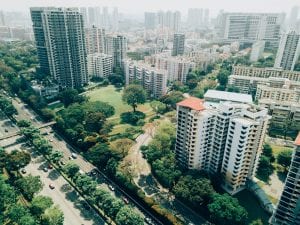
Green Spaces
Topics: Urban Planning, Community Needs, Community Action, Geographic Reasoning
Green spaces are exactly that… places in a city where plant life grows, such as parks, neighborhood squares, or urban gardens, and with rapid urbanization, it’s important to protect them. In this activity, students go outside and measure out the amount of grass needed to provide oxygen for one person. Then they calculate the amount of green space needed to supply oxygen to their entire class and then, for their school. In Part II, students analyze a city’s current allocation of green space and identify whether it meets the needs of the community. Finally, leverage students’ critical thinking-skills by asking them to design a city that meets both oxygen and living needs of an urban population. To take the lesson further, ask students to look at their own school- are there ways to increase green spaces? Studies show the benefits of school green spaces on students’ learning and development, so take that as a cue to get a class tree planting project or urban school garden underway after this activity!
Image credits: Subway train in NYC (Nicole Y-C on Unsplash); Tokyo street scene (Benjamin Wong on Unsplash); Texas suburb (ID 132505519 @Trong Nguyen, Dreamstime.com); Green Spaces in the City (chuttersnap on Unsplash)



